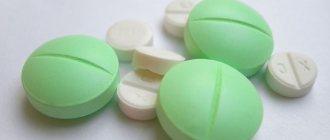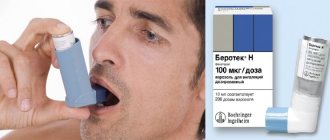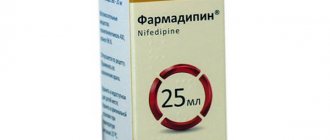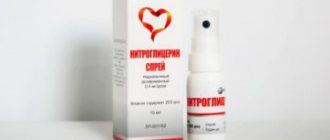Adrenergic agonists are a group of medications whose effect is associated with stimulation of adrenergic receptors located in internal organs and vascular walls. All adrenergic receptors are divided into several groups depending on their location, mediated effect and ability to form complexes with active substances. Alpha adrenergic agonists have an stimulating effect on alpha adrenergic receptors, causing a certain response in the body.
What are alpha adrenergic receptors
A1-adrenergic receptors are located on the surface membranes of cells, in the area of synapses, and respond to norepinephrine, which is released by the nerve endings of postganglionic neurons of the sympathetic nervous system. Localized in small-caliber arteries. Excitation of the receptors causes vascular spasm, hypertension, decreased permeability of the arterial wall, and a decrease in the manifestations of inflammatory reactions in the body.
A2-adrenergic receptors are located outside the synapses and on the presynaptic cell membrane. They react to the action of norepinephrine and adrenaline. Excitation of the receptors causes a reverse reaction, which is manifested by hypotension and vascular relaxation.
General information about adrenergic agonists
Alpha and beta adrenergic agonists, which independently bind to receptors sensitive to them and cause the effect of adrenaline or norepinephrine, are called direct-acting agents.
The result of the influence of drugs can also occur through an indirect effect, which manifests itself by stimulating the production of its own mediators, preventing their destruction, and helping to increase concentration at the nerve endings.
Adrenergic agonists are prescribed in the following conditions:
- heart failure, severe hypotension, collapse, shock, cardiac arrest;
- bronchial asthma, bronchospasm;
- increased intraocular pressure;
- inflammatory diseases of the mucous membranes of the eyes and nose;
- hypoglycemic coma;
- local anesthesia.
What are adrenomimetics
The body contains alpha and beta receptors, which are located in all organs and tissues of the body and are special protein molecules on cell membranes. Exposure to these structures causes various therapeutic and, under certain circumstances, toxic effects. Medicines of the group of adrenomimetics (from the Latin adrenomimeticum) are substances that are agonists of adrenergic receptors, which have a stimulating effect on them. The reaction of these agents with each of the molecules represents complex biochemical mechanisms.
When receptors are stimulated, vasospasm or dilation occurs, changes in mucus secretion occur, excitability and conductivity in functional muscle and nerve fibers change. In addition, adrenergic stimulants can accelerate or slow down metabolic processes. The therapeutic effects mediated by the action of these substances are varied and depend on the type of receptor that is stimulated in a given case.
Alpha adrenergic agonists
The group of drugs includes selective (acting on one type of receptor) and non-selective (excitation of a1- and a2-receptors) agents. A non-selective alpha-adrenergic agonist is represented directly by norepinephrine, which also has a stimulating effect on beta receptors.
Alpha adrenergic agonists, which affect α1 receptors, are antishock medications used for a sharp decrease in blood pressure. They can be used topically, causing constriction of arterioles, which is effective for glaucoma or allergic rhinitis. Known drugs of the group:
- "Midodrine";
- "Mezaton";
- "Etilephrine."
Alpha adrenergic agonists, which affect a2 receptors, are better known to the general population due to their widespread use. Popular representatives are “Xylometazoline”, “Nazol”, “Sanorin”, “Vizin”. Used in the treatment of inflammatory diseases of the eyes and nose (conjunctivitis, rhinitis, sinusitis).
The drugs are known for their vasoconstrictor effect, which helps relieve nasal congestion. The use of drugs should only occur under the supervision of a specialist, since long-term uncontrolled use can cause the development of drug resistance and atrophy of the mucous membrane.
Young children are also prescribed medications containing alpha-agonists. In this case, the drugs have a lower concentration of the active substance. These same forms are used in the treatment of people suffering from diabetes and hypertension.
Alpha adrenergic agonists that excite a2 receptors also include centrally acting drugs (Methyldopa, Clonidine, Catapresan). Their action is as follows:
- hypotensive effect;
- decreased heart rate;
- sedative effect;
- minor pain relief;
- decreased secretion of the lacrimal and salivary glands;
- decreased secretion of water in the small intestine.
Beta-agonists
The drugs in this group include drugs that stimulate beta receptors in the uterus, bronchi, skeletal and smooth muscles. Beta-adrenergic agonists can be selective and non-selective, but their mechanism of action is reduced to activation of the membrane enzyme adenylate cyclase, increasing the amount of intracellular calcium.
Beta-adrenergic agonists are used in the treatment of bradycardia and atrioventricular block. Effects that drugs demonstrate:
- improving the conductivity of the myocardium and bronchi;
- activation of glycogenolysis in the liver and muscles;
- decreased uterine tone;
- increased heart rate;
- balancing microcirculation of internal organs;
- relaxation of the vascular wall.
Indications for use
Beta-agonists of selective and general action are prescribed in the following cases:
- asthmatic conditions;
- threats of miscarriage at any stage of pregnancy;
- acute heart failure;
- atrioventricular block of the heart muscle.
List of drugs
Beta-agonists are effectively used to treat acute respiratory and heart failure, with the threat of premature birth. The most popular can be called Volmax (59 rubles). The most commonly used drugs are:
- Orciprenaline (Alupent) - relaxes the smooth muscles of the uterus, preventing miscarriage or premature birth, relieves bronchospasm. Price – 5,410 rubles.
- Dobutamine is a cardiotonic, cost: 389 rubles.
- Salmeterol – suppresses histamine synthesis, relieves bronchospasm. Price – 433 rubles.
- Ginipral - relieves uterine hypertonicity. Price – 233 rubles.
Contraindications
The general limits to the use of beta-agonists are:
- IHD;
- AMI;
- cardiogenic shock;
- cardiac tamponade;
- aortic valve stenosis;
- arterial hypertension;
- decompensated CHF;
- hypovolemia;
- individual intolerance to components;
- arrhythmias, atrioventricular block;
- thyrotoxicosis;
- hyperthyroidism;
- disruption of the liver and kidneys;
- diabetes.
Side effects
Beta-agonists have common negative effects from taking:
- symptoms of intoxication;
- nausea;
- attacks of ischemia;
- heart rhythm disturbance;
- sudden cardiac arrest
- hypokalemia;
- blood pressure fluctuations;
- cardiosclerosis;
- bronchospasm;
- hyperthermia of unknown origin;
- phlebitis;
- skin rashes;
- Quincke's edema;
- migraine;
- tremor;
- increased irritability.
"Mezaton"
A drug based on phenylephrine hydrochloride, which causes an increase in blood pressure. Its use requires precise dosage, since a reflex decrease in heart rate is possible. Mezaton increases blood pressure mildly compared to other drugs, but the effect is longer lasting.
Indications for use:
- arterial hypotension, collapse;
- preparation for surgery;
- vasomotor rhinitis;
- local anesthesia;
- poisoning of various etiologies.
The need for immediate results requires intravenous administration. The drug is also injected into the muscle, subcutaneously, or intranasally.
Classification of adrenergic agonists
The drugs included in this group excite a1-adrenergic receptors localized in vascular areas. Their main pharmacological effects are vasoconstrictor and increased blood pressure.
Phenylephrine hydrochloride (Mezaton) is not a catecholamine and is practically not destroyed by the enzyme catechol-o-methyltransferase. It has a long-lasting effect and is effective when taken orally. Phenylephrine hydrochloride causes constriction of arterioles and an increase in blood pressure (with the possible development of reflex bradycardia). The drug causes dilation of the pupils (without affecting accommodation) and lowers intraocular pressure. The mydriatic effect lasts for several hours. Phenylephrine hydrochloride is used to increase blood pressure during collapse and hypotension (intravenously, subcutaneously and intramuscularly). The pressor effect lasts 20 minutes when administered intravenously and 40-50 minutes when administered subcutaneously. The drug is used to prolong the action of local anesthetics, as well as to constrict blood vessels and reduce inflammation in rhinitis. Thanks to the vasoconstrictor effect, the feeling of nasal congestion is reduced. It is part of the combination drugs Anacold, Vibrocil, Coldact, Coldrex, Polydexa with phenylephrine, Rinza, Rinopront, Theraflu, etc. Side effects when using phenylephrine hydrochloride can include heart rhythm disturbances and increased blood pressure. The drug is contraindicated in cases of hypertension, severe atherosclerosis, and a tendency to spasms of the coronary vessels.
Midodrine
(Gutron) has pharmacological properties similar to phenylephrine hydrochloride. It is used mainly to increase blood pressure in various hypotensive conditions. Midodrine can be used for spontaneous urination, since it stimulates the a1-adrenergic receptors of the sphincter of the bladder and urethra and increases their tone. It should be borne in mind that midodrine is a doping drug and is prohibited for use in athletes.
2) a2-adrenergic agonists (stimulants of a2-adrenergic receptors)
Xylometazoline
(Galazolin, Dlyanos, Ximelin, Otrivin),
Naphazolin
(Naphthyzin, Sanorin),
Oxymetazoline
(Nazivin, Nazol),
Tetrizolin
(Tizin).
The drugs included in this group excite postsynaptic a2-adrenergic receptors of vascular smooth muscles. Their main pharmacological effect is vasoconstrictor
. Used topically in the form of drops and nasal spray. When administered intranasally, they reduce swelling of the mucous membrane of the nasal passages and paranasal sinuses, and facilitate nasal breathing. According to their chemical structure, they are derivatives of imidazoline. They have a longer local vasoconstrictor effect than phenylephrine hydrochloride. Depending on the dosage form and other components included in it, their effect lasts from 6-8 hours to 10-12 hours. These drugs should not be used more than three times a day, as tachycardia and increased blood pressure may occur. The drugs are contraindicated for hypertension, tachycardia, and severe atherosclerosis.
International nonproprietary name
"Xylometazoline"
A drug that has the active substance of the same name, which is part of “Galazolin”, “Otrivin”, “Xymelin”, “Dlyanos”. It is used in the local treatment of acute infectious rhinitis, sinusitis, hay fever, otitis media, and in preparation for surgical or diagnostic interventions in the nasal cavity.
Available in the form of a spray, drops and gel for intranasal applications. The spray is approved for use by children over 12 years of age. Prescribed with caution in the following conditions:
- angina pectoris;
- breastfeeding period;
- thyroid diseases;
- prostatic hyperplasia;
- diabetes;
- pregnancy.
"Clonidine"
The drug is an alpha-adrenergic agonist. The mechanism of action of Clonidine is based on the stimulation of a2-adrenergic receptors, resulting in a decrease in pressure and the development of a slight analgesic and sedative effect.
Widely used for various forms of hypertension, hypertensive crisis, to relieve an attack of glaucoma, in combination with other drugs for the treatment of drug and alcohol addiction.
"Clonidine" is contraindicated during pregnancy, however, in the case of severe gestosis in the later stages, when the benefit to the mother outweighs the risk of harm to the fetus, it is possible to use small doses of the medication in combination with other drugs.
Adrenergic agonists of indirect action
In addition to agents that directly bind to adrenergic receptors, there are others that indirectly have their effect by blocking the breakdown of natural mediators (adrenaline, norepinephrine), increasing their release, and reducing the reuptake of “excess” amounts of adrenergic stimulants.
Among the indirect adrenergic agonists, ephedrine, imipramine, and drugs from the group of monoamine oxidase inhibitors are used. The latter are prescribed as antidepressants.
Ephedrine is very similar in action to adrenaline, and its advantages are the possibility of oral administration and a longer lasting pharmacological effect. The difference lies in the stimulating effect on the brain, which is manifested by excitement and an increase in the tone of the breathing center. Ephedrine is prescribed to relieve attacks of bronchial asthma, hypotension, shock, and local treatment for rhinitis is possible.
The ability of some adrenergic agonists to penetrate the blood-brain barrier and have a direct effect there allows them to be used in psychotherapeutic practice as antidepressants. Widely prescribed monoamine oxidase inhibitors prevent the destruction of serotonin, norepinephrine and other endogenous amines, thereby increasing their concentration at the receptors.
Nialamid, tetrindole, and moclobemide are used to treat depression. Imipramine, which belongs to the group of tricyclic antidepressants, reduces the reuptake of neurotransmitters, increasing the concentration of serotonin, norepinephrine, and dopamine at the site of transmission of nerve impulses.
Adrenergic agonists not only have a good therapeutic effect in many pathological conditions, but are also very dangerous due to some side effects, including arrhythmias, hypotension or hypertensive crisis, psychomotor agitation, etc., therefore drugs of these groups should be used only as prescribed by a doctor. They should be used with extreme caution by persons suffering from diabetes mellitus, severe cerebral atherosclerosis, arterial hypertension, and thyroid pathology.
"Vizin"
A tetrizoline-based vasoconstrictor used in ophthalmology. Under its influence, the pupil dilates, swelling of the conjunctiva decreases, and the production of intraocular fluid decreases. Used in the treatment of allergic conjunctivitis, with mechanical, physical or chemical effects of foreign agents on the mucous membrane of the eyelids.
Overdose of alpha-agonists
Overdose is manifested by persistent changes that characterize the effects of alpha-adrenergic agonists. The patient is concerned about high blood pressure, increased heart rate with rhythm disturbances. During this period, the development of a stroke or pulmonary edema is possible.
Overdose therapy involves the use of the following groups of drugs:
- Peripheral sympatholytics disrupt the transmission of nerve impulses in the periphery and in the nervous system. Thus, blood pressure decreases, heart rate and peripheral resistance decrease.
- Calcium antagonists are aimed at blocking the entry of calcium ions into cells. The heart muscle reduces the need for oxygen, its contractility decreases, relaxation during diastole improves, and all groups of arteries expand.
- Myotropic drugs help relax smooth muscles, including the muscular wall of blood vessels.
Alpha-adrenergic agonists, the use of which has a large group of indications, require careful selection of dosage, monitoring of electrocardiogram parameters, blood pressure, and peripheral blood.
Non-selective adrenergic agonists
Non-selective adrenergic agonists are capable of stimulating both alpha and beta receptors, causing a wide range of changes in many organs and tissues. These include adrenaline and norepinephrine.
Epinephrine activates all types of adrenergic receptors, but is considered primarily a beta agonist. Its main effects:
- Narrowing of blood vessels in the skin, mucous membranes, abdominal organs and enlargement of the lumens of blood vessels in the brain, heart and muscles;
- Increased myocardial contractility and heart rate;
- Expansion of the lumens of the bronchi, reduction of mucus production by the bronchial glands, reduction of edema.
Adrenaline is used mainly for the purpose of providing first aid and emergency care for acute allergic reactions, including anaphylactic shock, cardiac arrest (intracardiac), hypoglycemic coma. Adrenaline is added to anesthetic drugs to increase their duration of action.
The effects of norepinephrine are in many ways similar to adrenaline, but less pronounced. Both drugs have the same effect on the smooth muscles of internal organs and metabolism. Norepinephrine increases myocardial contractility, constricts blood vessels and increases blood pressure, but the heart rate may even decrease, due to the activation of other heart cell receptors.
The main use of norepinephrine is limited to the need to raise blood pressure in cases of shock, injury, or poisoning. However, caution should be exercised due to the risk of hypotension, renal failure if dosing is inadequate, and skin necrosis at the injection site due to narrowing of small microvasculature vessels.











